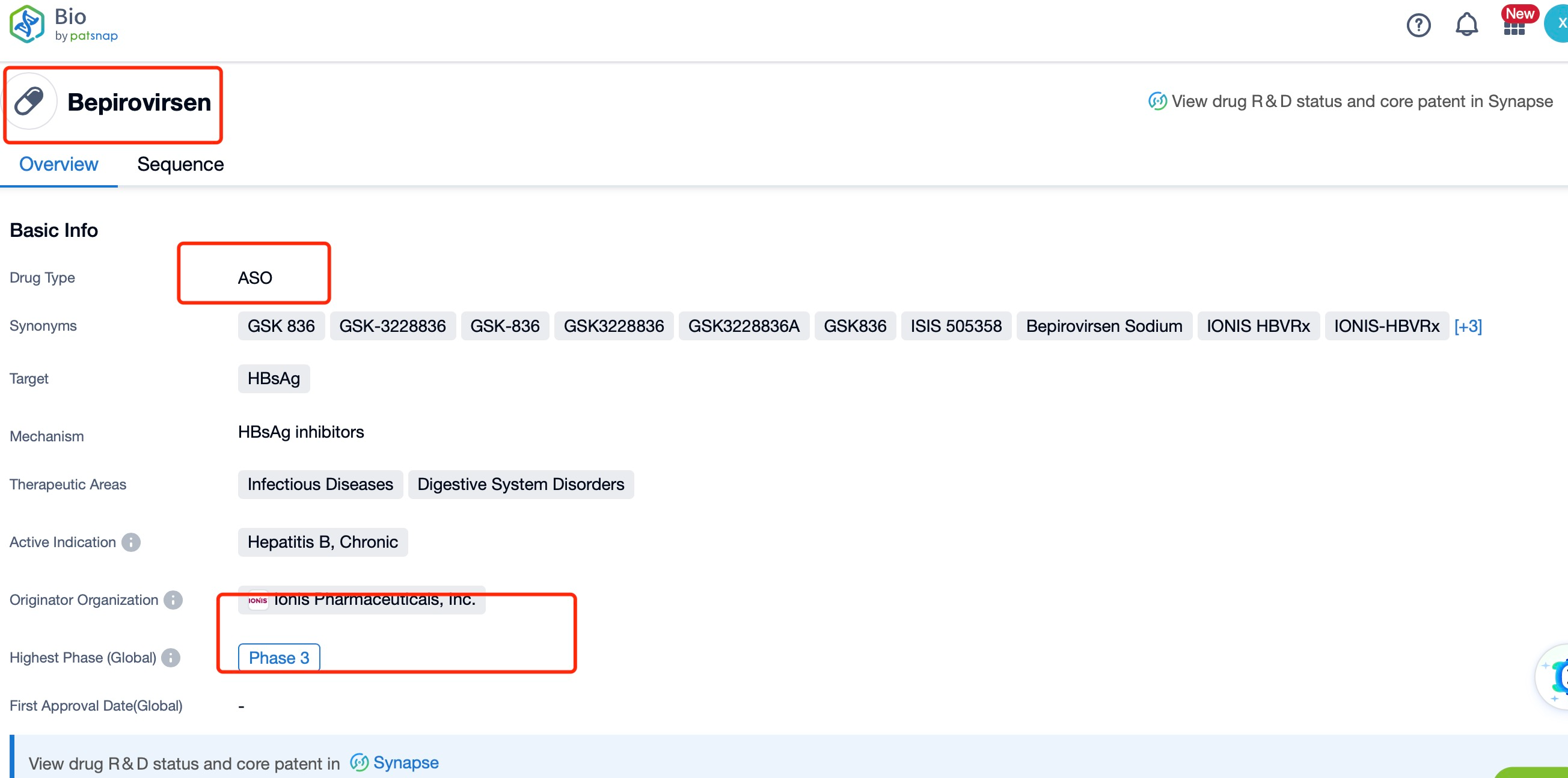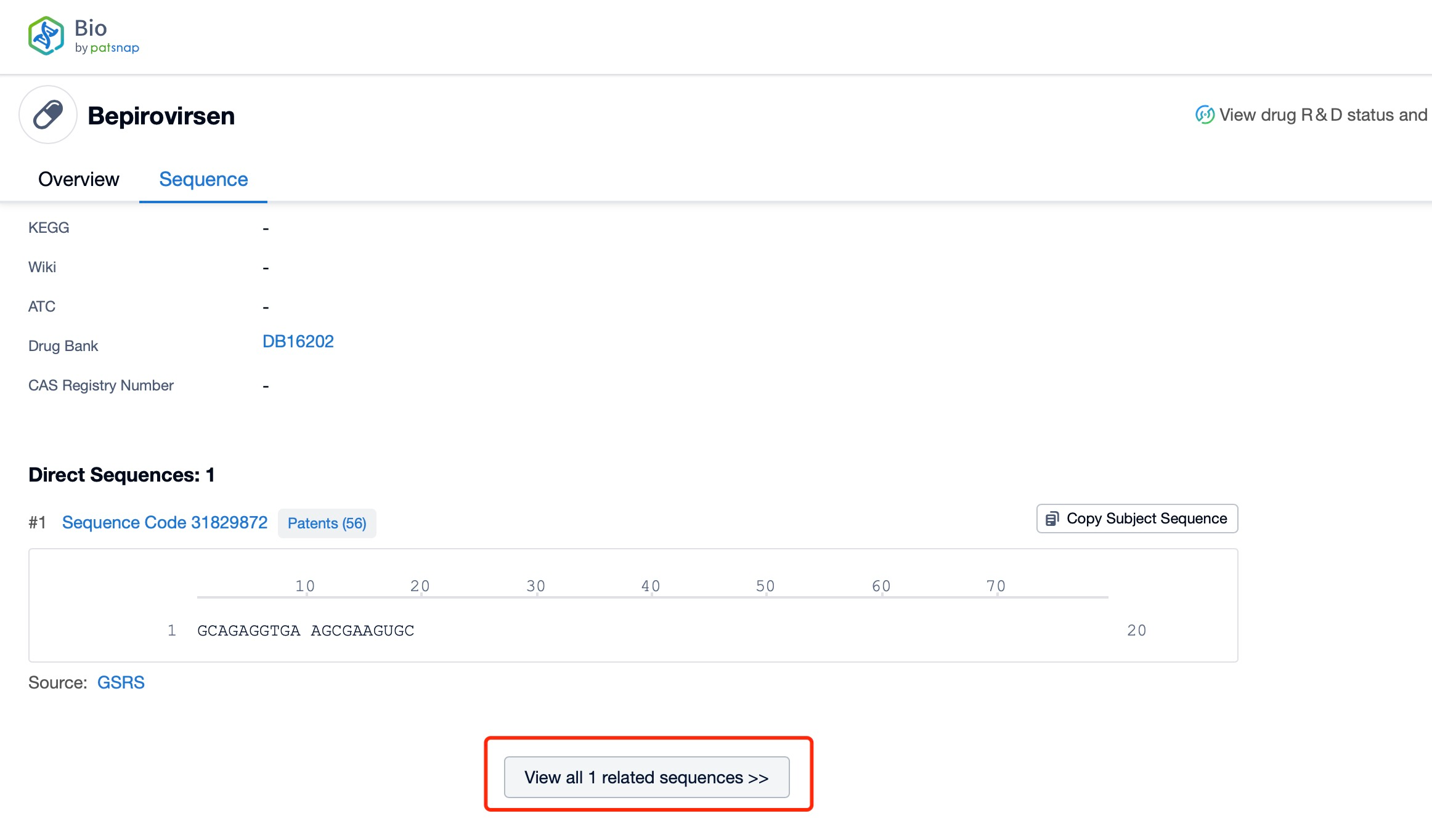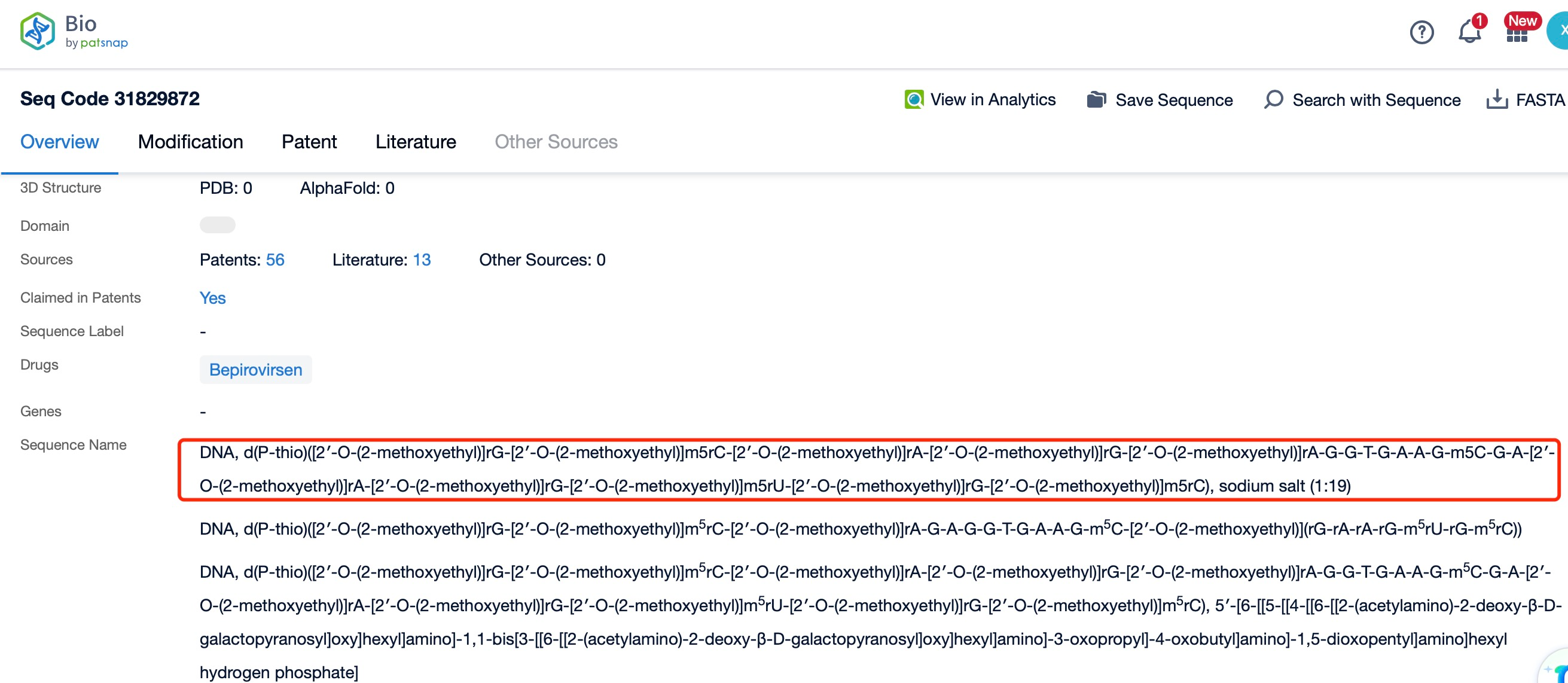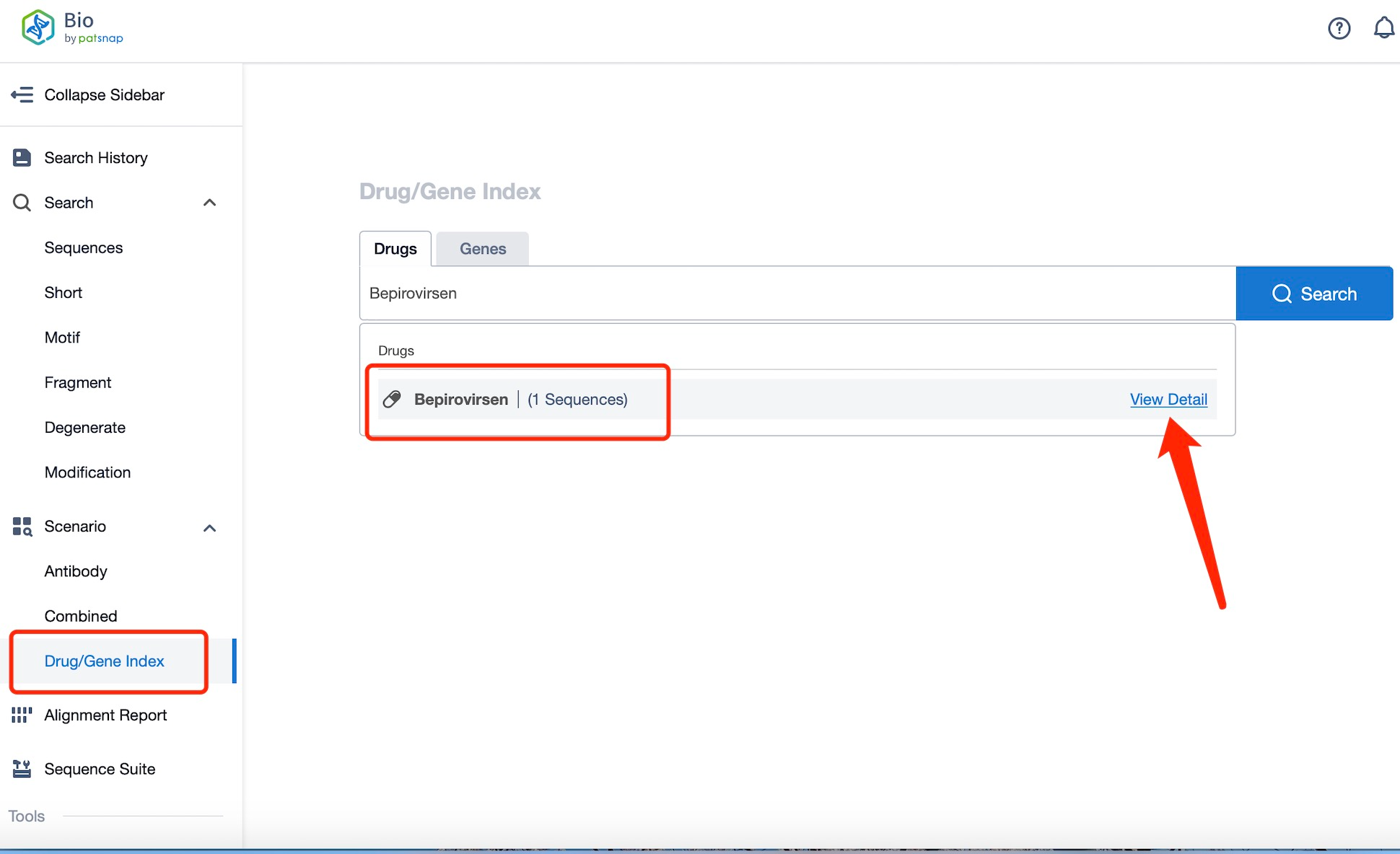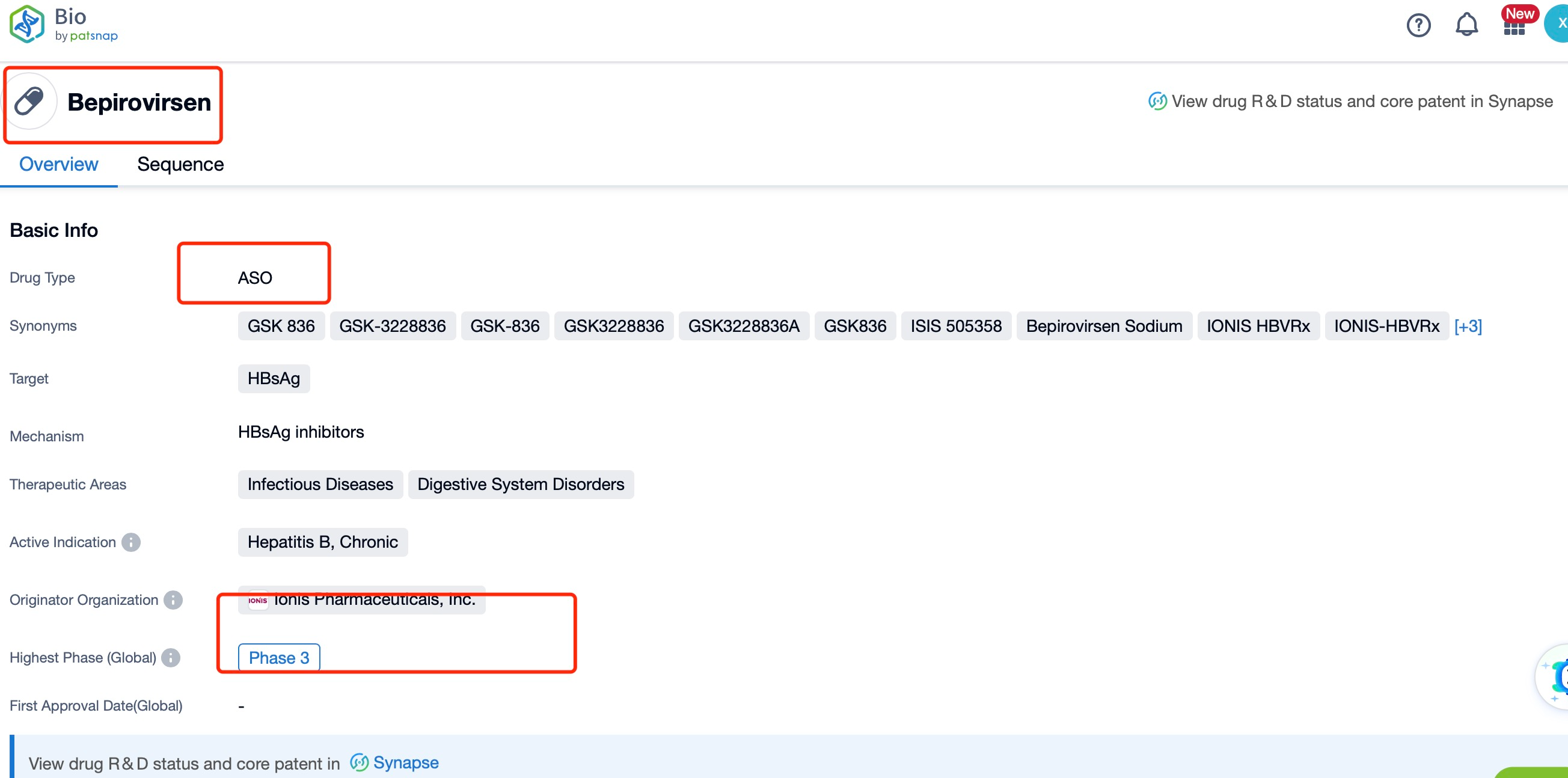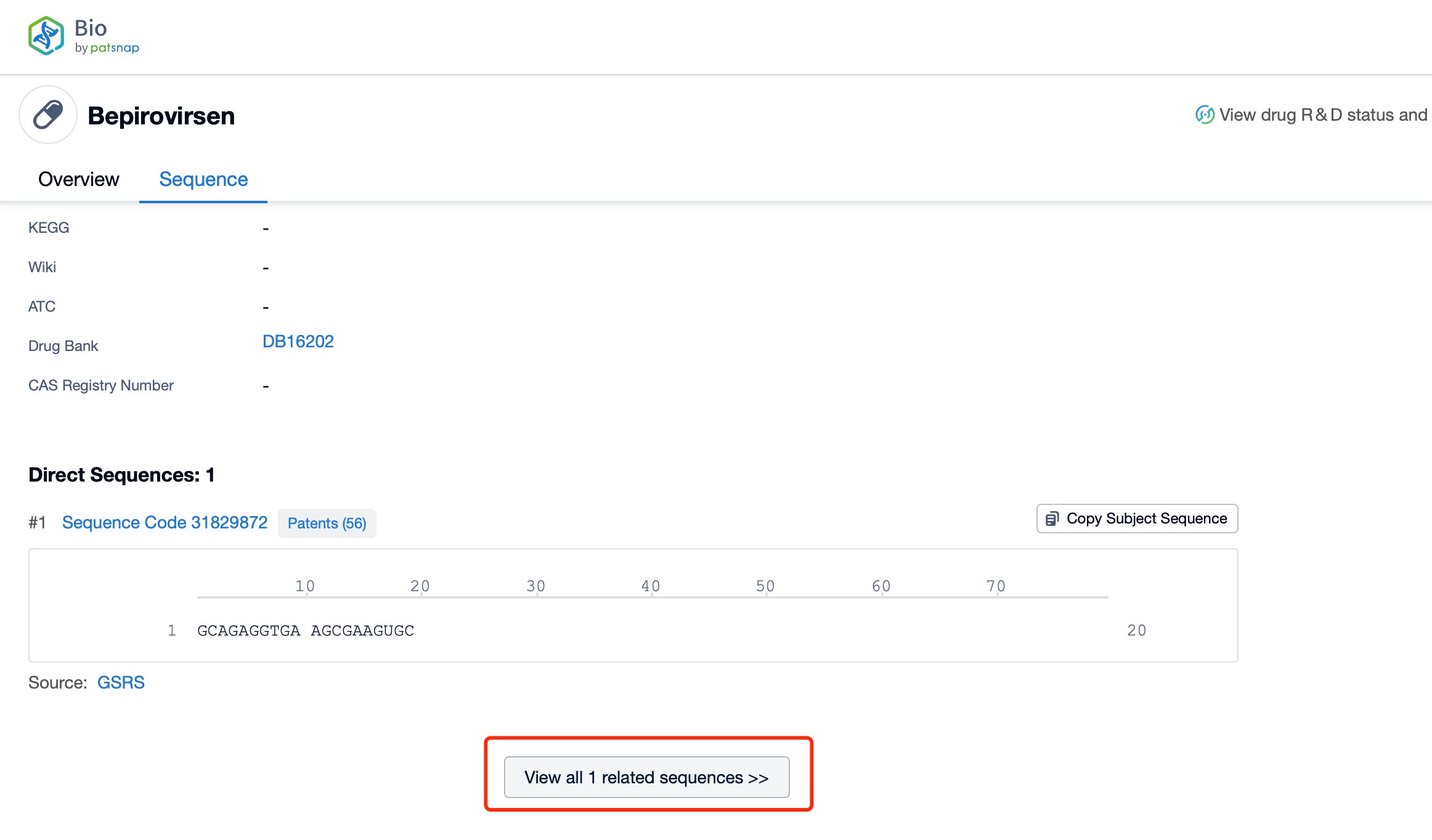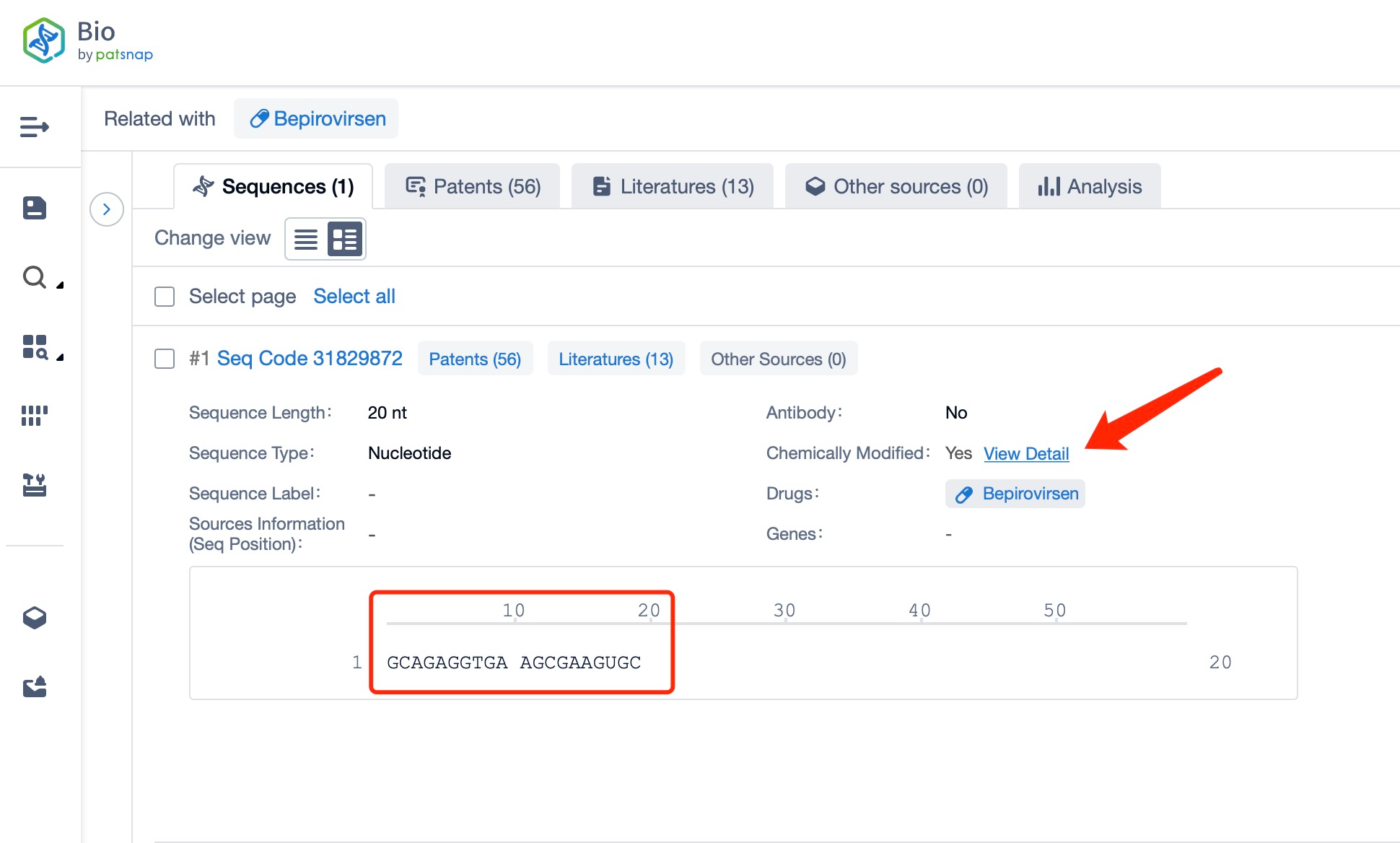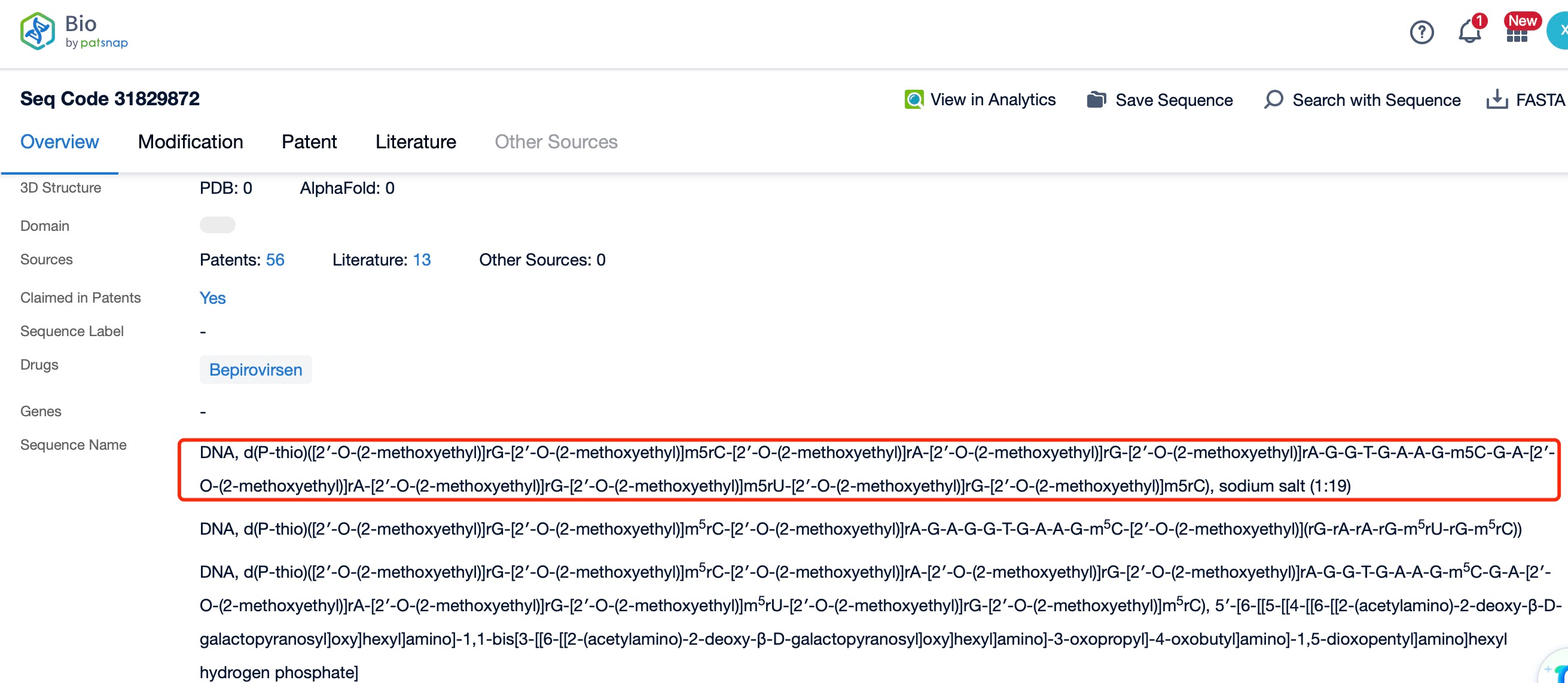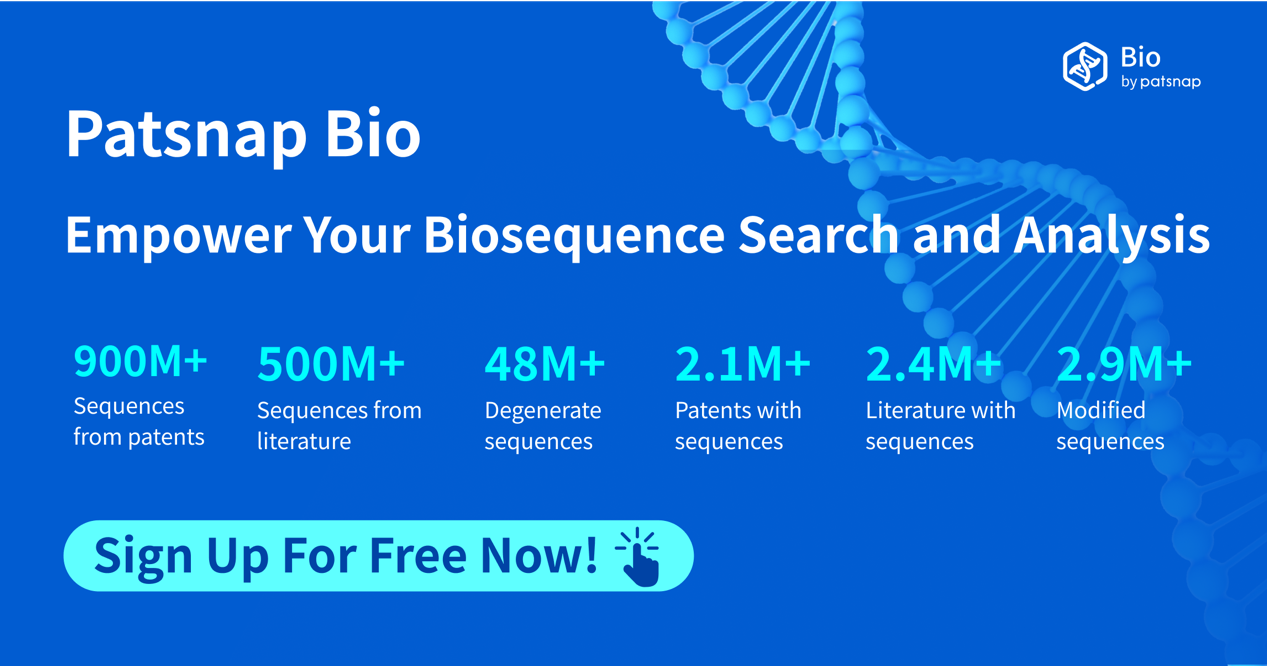How to find the sequence of Bepirovirsen?
Bepirovirsen, developed by GSK in collaboration with Ionis Pharmaceuticals, is an antisense oligonucleotide that targets the hepatitis B virus (HBV) RNA. HBV is a viral infection that attacks the liver and can cause both acute and chronic disease. Chronic HBV infection can lead to serious health issues, including cirrhosis and liver cancer. Bepirovirsen is indicated for the treatment of chronic hepatitis B (CHB), aiming to reduce the levels of HBV RNA and surface antigen (HBsAg), which are key markers of viral replication and immune response. By targeting HBV RNA, bepirovirsen aims to decrease viral load and improve the chances of achieving a functional cure for CHB.
Summary of Research Progress of Bepirovirsen
Bepirovirsen works by binding to the pre-genomic and pre-core RNA of HBV, leading to their degradation via RNase H-mediated cleavage. This prevents the synthesis of viral proteins, including HBsAg, and reduces the production of new virus particles. By addressing the underlying viral replication, bepirovirsen aims to control the infection and allow the immune system to clear the virus more effectively. Bepirovirsen is administered subcutaneously, offering a convenient and less invasive route of administration compared to other antiviral therapies. The drug is currently under review by regulatory agencies, including the U.S. Food and Drug Administration (FDA) and the European Medicines Agency (EMA), and has shown promising results in clinical trials.
Globally, the competition in the HBV market is intense, with several companies developing novel therapies. Bepirovirsen faces competition from existing antiviral drugs, such as nucleos(t)ide analogues (NAs), which are the current standard of care for CHB. These drugs, including entecavir and tenofovir, are effective in suppressing viral replication but rarely lead to a functional cure. Novel therapies, such as siRNAs and other antisense oligonucleotides, are also in development. For example, Arrowhead Pharmaceuticals is developing ARO-HBV, an siRNA therapy that targets HBV RNA, and Dicerna Pharmaceuticals is developing RG6346, another siRNA therapy. Despite this competition, bepirovirsen offers a unique advantage with its potent and specific mechanism of action and its potential to achieve a functional cure for CHB.
Clinical research on bepirovirsen has demonstrated its efficacy and safety in treating CHB. The Phase 2 clinical trial, known as B-Clear, showed that bepirovirsen could significantly reduce HBsAg levels and viral load in patients with CHB. The drug was generally well-tolerated, with common side effects including injection site reactions, fatigue, and headache. Ongoing and future trials aim to further evaluate the long-term safety and efficacy of bepirovirsen, as well as explore its potential in combination with other therapies to achieve better outcomes. The B-Clear trial has provided encouraging data, showing that bepirovirsen can achieve sustained reductions in HBsAg levels, which is a key marker for a functional cure in CHB.
Sequence Characteristics of Bepirovirsen
Bepirovirsen is a 20-nucleotide phosphorothioate-modified oligonucleotide. The sequence of bepirovirsen is specifically designed to bind to the pre-genomic and pre-core RNA of HBV, targeting regions that are essential for the synthesis of viral proteins. This sequence is optimized to ensure high specificity and efficiency in binding to the target RNA, which is crucial for the drug's therapeutic efficacy and safety. The precise sequence of bepirovirsen is a proprietary information, but it is known to be highly complementary to the target HBV RNA, allowing for effective RNase H-mediated cleavage and degradation.
Chemical Modification and Species of Bepirovirsen
The chemical modifications in bepirovirsen include phosphorothioate linkages. The phosphorothioate backbone replaces one of the non-bridging oxygen atoms in the phosphate group with a sulfur atom, enhancing the stability of the oligonucleotide and protecting it from nuclease degradation. This modification is crucial for the drug's ability to reach and bind to the target RNA in the liver. The phosphorothioate backbone also improves the pharmacokinetic properties of the drug, such as its half-life and tissue distribution, which are important for its therapeutic effectiveness.
The phosphorothioate modifications in bepirovirsen provide several key advantages. First, they significantly enhance the stability of the oligonucleotide, allowing it to remain active in the cellular environment for a longer period. This increased stability is crucial for the drug's effectiveness in binding to and degrading the HBV RNA. Second, the phosphorothioate backbone improves the pharmacokinetic profile of the drug, increasing its half-life and bioavailability. This means that the drug can be administered less frequently, which is beneficial for patient convenience and compliance. Third, the phosphorothioate modifications reduce the risk of off-target effects by enhancing the specificity of the oligonucleotide for its target RNA.
The role of the phosphorothioate modifications in bepirovirsen is multifaceted. They protect the oligonucleotide from degradation by nucleases, ensuring that it can reach its target in the liver. They also enhance the binding affinity of the oligonucleotide to the HBV RNA, ensuring efficient and specific RNase H-mediated cleavage. Additionally, the phosphorothioate modifications improve the pharmacokinetic properties of the drug, such as its half-life and tissue distribution, which are essential for its therapeutic effectiveness. These modifications also reduce the immunogenicity of the oligonucleotide, minimizing the risk of adverse immune responses.
Summary and Prospect
In summary, bepirovirsen represents a significant advancement in antisense technology and the treatment of chronic hepatitis B (CHB). Its mechanism of action, involving the degradation of HBV RNA, has shown promising results in reducing viral load and HBsAg levels, which are key markers for a functional cure. Despite facing competition from existing antiviral drugs and novel therapies, bepirovirsen offers a unique advantage with its potent and specific mechanism of action and its potential to achieve a functional cure for CHB. Future research may focus on improving delivery methods and exploring combination therapies to enhance its clinical utility. The sequence characteristics and chemical modifications of bepirovirsen, including its phosphorothioate backbone, contribute to its stability, specificity, and efficacy, making it a valuable tool in the management of CHB. However, the need for regular subcutaneous injections and the management of side effects will continue to be important considerations in its clinical use. The ongoing and future clinical trials will provide further insights into the long-term safety and efficacy of bepirovirsen, potentially paving the way for its approval and broader use in the treatment of CHB.
How to find the sequence of an ASO?
In Patsnap Bio, you can find the sequence and latest research and development advances of all ASOs.
Taking Bepirovirsen as an example, first click on the Drug/Gene Index on the Patsnap Bio homepage. Here you can search for sequence information by drug and gene names. Enter ' Bepirovirsen ' in the search box and click to view the details. On the details page, you can find the basic information and research progress of Bepirovirsen.
Click "View all related sequences" below the sequence information to search for and retrieve all biological sequences similar to this information.
Clicking on the sequence name will provide you with all the basic information of that sequence.
Patsnap Bio helps you turn weeks into minutes with cutting-edge AI-enabled tools built to master the complexities of sequence retrieval and automate IP analysis with precision and ease.
